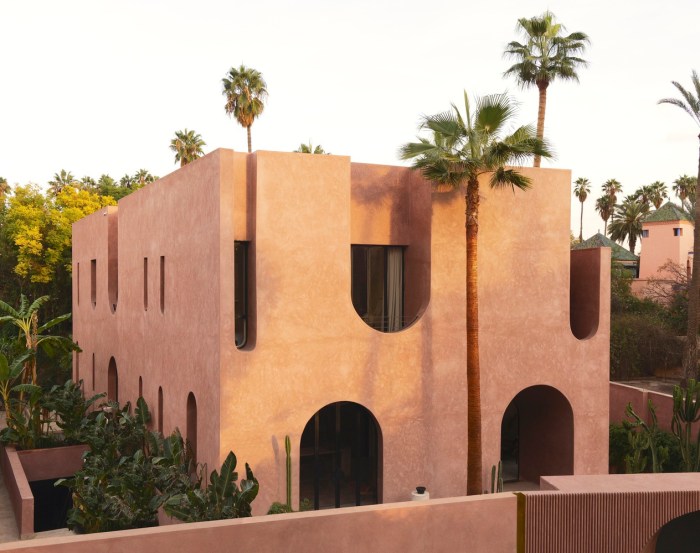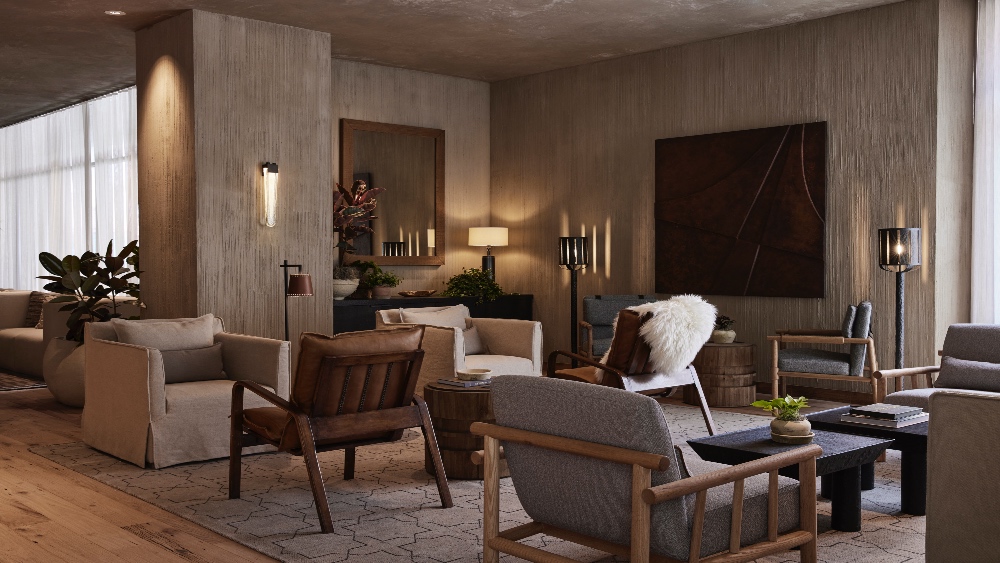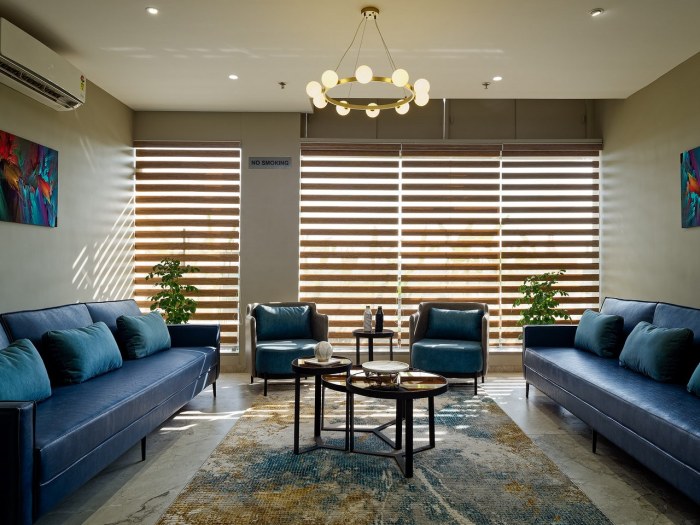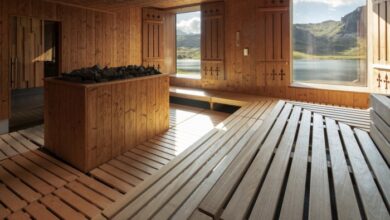Hotels That Feature Local Architecture And Materials
Exploring Hotels That Feature Local Architecture and Materials reveals a world where design reflects the very soul of a place. These hotels go beyond mere accommodation; they tell stories, celebrate heritage, and connect guests with the local community.
By embracing local architectural styles and using materials sourced from the surrounding environment, these hotels not only enhance their aesthetic appeal but also promote sustainability and enrich the travel experience. Each structure becomes a unique symbol of cultural identity, inviting visitors to appreciate the beauty and history of the region.
Definition of Local Architecture in Hotels
Local architecture in hotels refers to the design and aesthetic that reflect the cultural, historical, and environmental contexts of a specific region. This concept holds significant importance as it fosters a connection between the visitors and the locale, creating an immersive experience. When hotels embrace local architecture, they not only celebrate the unique characteristics of their surroundings but also enhance the sense of authenticity that modern travelers seek.
Local architectural styles often incorporate elements that are distinctive to the area, creating a sense of place that resonates with guests. For instance, a hotel situated in the Mediterranean might showcase terracotta tiles and whitewashed walls, while one in the Swiss Alps could feature wooden chalets with intricate carvings. Such representations of local culture serve as a visual narrative, weaving together the history and traditions of the region into the fabric of the hotel itself.
Examples of Architectural Styles Representing Local Culture
Local architecture can take various forms, each embodying the essence of its environment. Here are a few notable examples:
- Japanese Ryokan: These traditional inns reflect simplicity and minimalism, using natural materials such as wood and rice paper. The design often emphasizes a connection to nature, with sliding doors and tatami mat floors that invite the outdoors in.
- Andean Lodges: In regions like Peru, lodges are constructed using adobe and stone, allowing them to blend seamlessly with the mountainous landscape. Their construction often utilizes local craftsmanship, preserving traditional building techniques.
- Balinese Villas: In Bali, hotels often incorporate open-air designs, thatched roofs, and natural stones. This style promotes harmony with the surrounding environment, enhancing the tropical sensory experience.
The materials used in constructing these hotels play a critical role in promoting sustainability.
Contribution of Locally Sourced Materials to Sustainability
Utilizing locally sourced materials in hotel construction not only reduces transportation emissions but also supports the local economy. This practice fosters a more sustainable approach to tourism and construction. Here are some key benefits:
- Reduced Carbon Footprint: By sourcing materials from nearby, hotels significantly lower their carbon emissions associated with transportation, making their operations more environmentally friendly.
- Community Support: Purchasing local materials helps boost the local economy, creating jobs and supporting craftsmen who preserve traditional techniques.
- Enhanced Aesthetic Value: Local materials often have unique characteristics that enhance the hotel’s design, ensuring that the aesthetic remains true to the region’s heritage.
“Local architecture breathes life into the spaces we inhabit, telling stories of culture, history, and the environment.”
These thoughtful choices embody a commitment to sustainability while creating distinctive, memorable experiences for guests.
Benefits of Staying in Hotels with Local Architecture

Source: imgix.net
Staying in hotels that feature local architecture and materials can transform a travel experience into something truly memorable. These hotels often showcase unique design elements that reflect the culture and heritage of their location, allowing guests to immerse themselves in the local atmosphere. From the moment you step inside, the surroundings resonate with the stories of the land, making your stay not just comfortable, but enriching.One of the most significant advantages of staying in these hotels is the unique experiences they offer, which stem from their distinct architectural style and use of local materials.
Each hotel tells a story through its design, providing a sense of place that generic hotel chains often lack. Local architecture incorporates regional building techniques and materials, such as adobe in the Southwest United States or timber in Scandinavian designs. This connection to local craftsmanship creates an authentic environment that enhances the travel experience, giving guests a deeper appreciation for the destination.
Contribution to Local Economy and Community
Hotels that embrace local architecture play a crucial role in supporting the local economy and community. By sourcing materials and labor locally, these establishments contribute to job creation and economic growth. The following points highlight the importance of this contribution:
- Local employment opportunities arise from the construction and ongoing operation of these hotels.
- Purchasing local materials helps sustain artisans who specialize in traditional building techniques.
- By attracting travelers, these hotels stimulate spending in nearby restaurants, shops, and cultural attractions.
The ripple effect of these contributions fosters a sense of community pride and encourages the preservation of local traditions and crafts.
Environmental Advantages of Using Local Materials
Utilizing locally-sourced materials in hotel construction not only reduces transportation emissions but also supports sustainable building practices. The environmental benefits are significant and include the following aspects:
- Lower carbon footprint due to reduced transportation costs and emissions from materials.
- Enhanced energy efficiency, as local materials are often better suited to the regional climate and conditions.
- Promotion of biodiversity by using natural materials that integrate harmoniously with the surrounding environment.
Hotels that prioritize local architecture and materials often engage in sustainable practices, further appealing to environmentally-conscious travelers. The result is a harmonious blend of comfort, culture, and environmental responsibility that enriches both the guest experience and the local community.
Case Studies of Hotels Featuring Local Architecture
The interplay between architecture and culture is vividly illustrated in hotels that embody local styles and materials. These unique accommodations not only offer guests a place to stay but also serve as a testament to the region’s rich heritage. This exploration of notable hotels reveals how local architecture can enhance the travel experience and foster a deeper connection with the surrounding environment.One exceptional aspect of these hotels is their thoughtful integration of regional materials into their design, creating spaces that resonate with local history and character.
Below are notable examples from various regions, each showcasing distinct architectural styles tied to their locale.
Hotel Antiche Mura, Sorrento, Italy
Nestled in the heart of Sorrento, Hotel Antiche Mura is a beautiful representation of Neapolitan architecture. The hotel harmoniously integrates traditional limestone and terracotta tiles, reflecting the region’s history. The use of large arched windows enhances natural light, creating airy interiors that are inviting and warm. Guests can enjoy the stunning views of the Bay of Naples from the terrace, where the architecture seamlessly blends with the coastal landscape.
Hôtel de Glace, Quebec, Canada
Hôtel de Glace, or the Ice Hotel, presents a striking example of temporary architecture using local ice and snow. Each winter, this unique hotel is reconstructed from blocks of ice harvested from the nearby Saint Lawrence River. The intricate carvings and sculptures inside are crafted by local artists, showcasing indigenous designs that celebrate the rich cultural heritage of the region.
The hotel features ice bars, ice chapels, and beautiful snow suites, offering guests a truly immersive winter experience.
Alila Villas Uluwatu, Bali, Indonesia
Alila Villas Uluwatu is an architectural marvel that highlights sustainable luxury through the use of local materials. Crafted from volcanic stone and bamboo, the resort’s design embraces the natural topography of the island. Infinity pools and open-air pavilions offer breathtaking views of the Indian Ocean, while the villas are thoughtfully designed to minimize environmental impact. The melding of traditional Balinese styles with modern luxury creates a unique atmosphere that deeply resonates with the local culture.
Singita Sabora Tented Camp, Tanzania
In the heart of the Serengeti, Singita Sabora Tented Camp utilizes canvas and wood to create a luxurious safari experience that honors the local environment. The camp’s design reflects the traditional Maasai dwelling known as a “enkang,” which harmonizes with the landscape while providing comfort and elegance. Natural materials, such as thatch and wood, are employed throughout the camp to enhance the authentic experience while ensuring sustainability.
Guests can enjoy stunning views of wildlife from their tents, immersed in the beauty of the African wilderness.
La Casa de la Playa, Mexico
La Casa de la Playa in the Riviera Maya is an exquisite example of modern Mexican architecture blended with traditional elements. The hotel uses local limestone and vibrant colors that reflect the natural beauty of the Yucatán Peninsula. Featuring open-air designs and lush gardens, the architecture pays homage to traditional Mexican haciendas while offering a contemporary twist. The use of local craftsmanship is evident in the intricate tile work and handcrafted furnishings, creating a warm and inviting atmosphere for guests.
Design Principles for Hotels Using Local Materials
Designing hotels that utilize local materials involves a deep understanding of the environment and culture surrounding the property. The principles of design focus on creating spaces that resonate with the natural landscape and the community’s heritage. By integrating these elements, hotels can offer a unique experience that celebrates the locality and enhances the guest’s connection to the destination.Architects play a crucial role in selecting materials that reflect the cultural heritage of the area.
This selection process involves careful consideration of the local climate, geography, and historical context. By choosing materials that have been traditionally used in the region, architects can ensure that the hotel is not only aesthetically pleasing but also functional and sustainable.
Principles of Harmony with Local Environment
The principles of design for hotels using local materials aim to create a sense of belonging and integration with the surrounding environment. Here are key principles that guide this process:
- Sustainability: The use of local materials reduces transportation costs and carbon emissions, promoting environmental stewardship.
- Contextual Relevance: Designs should be reflective of the local culture and history, ensuring that the architecture complements the surrounding landscape.
- Natural Aesthetics: Emphasizing natural materials, such as stone, wood, and clay, helps to create a visually appealing and cohesive design.
- Climate Adaptability: Utilizing materials that are suited to the local climate enhances the building’s energy efficiency and comfort for guests.
- Community Engagement: Involving local artisans in the design process adds authenticity and strengthens ties with the community.
Selection of Local Materials
Architects and designers selecting materials for hotel construction must consider multiple factors that reflect the cultural heritage of the area. This includes:
- Historical Significance: Materials that have a historical context in the region should be prioritized, creating a narrative that visitors can appreciate.
- Local Sourcing: Prioritizing materials that can be sourced locally ensures a lower environmental impact and supports the local economy.
- Durability: The chosen materials must be durable and suitable for the local environmental conditions, ensuring longevity and reducing maintenance costs.
- Aesthetic Compatibility: The materials should harmonize with the overall aesthetic of the hotel, blending seamlessly with the landscape.
Framework for Assessing Local Materials
To assess the appropriateness of local materials in hotel construction, a structured framework can be applied. This framework includes:
- Material Availability: Evaluating the availability of materials in the local region is essential for practicality and cost-effectiveness.
- Environmental Impact: Analyzing the environmental footprint of extracting and using the materials helps ensure sustainable practices.
- Cultural Significance: Understanding the cultural importance of materials to the local community provides valuable insights into their relevance in the hotel design.
- Regulatory Compliance: Ensuring that selected materials meet local building codes and regulations is crucial for the project’s legitimacy.
- Innovation and Design Potential: Assessing how local materials can be innovatively integrated into the design allows for creative architectural expressions.
Challenges Faced in Implementing Local Architecture
Designing hotels that embrace local architecture and materials is a commendable goal, yet it is often fraught with challenges. Architects and developers must navigate a complex landscape of regulations, sourcing issues, and community expectations while trying to create structures that reflect the essence of their surroundings. These challenges can detract from the vision of integrating local elements, but they also present opportunities for creative solutions.One common challenge that architects face is the availability of local materials, which can be limited or difficult to source.
This scarcity can be compounded by a lack of knowledge among builders regarding traditional construction techniques. Additionally, architects may encounter resistance from local authorities concerning zoning laws and building codes that do not accommodate innovative local designs or sustainable practices. These regulations can hinder the creative use of materials that define a region’s architectural identity.
Regulatory and Zoning Issues
Regulatory and zoning challenges are often significant hurdles in the implementation of local architecture in hotel design. Many areas possess strict building codes that prioritize uniformity over local character, which can stifle creativity. Architects must familiarize themselves with these regulations and sometimes advocate for amendments that embrace local design.Factors contributing to these issues may include:
- Height Restrictions: Many municipalities enforce limits on building heights to maintain a certain skyline, which can restrict the design potential of hotels.
- Material Restrictions: Building codes may specify certain materials for safety and durability, limiting the use of traditional local materials.
- Historical Preservation Guidelines: In areas with historical significance, regulations may require adherence to specific architectural styles, which can conflict with modern interpretations of local design.
To navigate these challenges, architects often engage in open dialogue with local planning authorities. By demonstrating the benefits of local architecture, they can foster a collaborative approach to reimagining regulations that honor the past while embracing innovation.
Strategies for Overcoming Sourcing Challenges
Addressing the obstacles associated with sourcing local materials requires creativity and resourcefulness. Architects and developers can adopt several strategies to mitigate these challenges effectively.Understanding the importance of community collaboration is vital. Establishing relationships with local artisans and suppliers can facilitate access to materials and traditional craftsmanship. Considerations include:
- Building Local Networks: Creating partnerships with local suppliers and craftsmen ensures a consistent supply of materials and preserves traditional skills.
- Implementing Sustainable Practices: Using reclaimed materials or repurposing existing structures can reduce reliance on new resources and minimize waste.
- Engaging the Community: Involving local residents in the design process can yield valuable insights into cultural preferences and sustainable practices that resonate with the community.
By fostering these relationships and employing innovative sourcing strategies, architects can overcome obstacles and create hotels that truly reflect the spirit of their locale. The journey may be challenging, but the rewards of honoring local architecture and materials are profound, enriching the travel experience for guests and honoring the heritage of the community.
Future Trends in Local Architecture for Hotels

Source: robbreport.com
The future of hotel architecture is increasingly intertwined with local culture and materials. As travelers become more conscious of their environmental impact and seek authentic experiences, hotels are evolving to reflect the unique characteristics of their surroundings. This trend not only enhances the aesthetic appeal of hotels but also fosters a deeper connection between guests and the local community.Emerging trends in hotel architecture are prioritizing not only the use of local materials but also innovative designs that harmonize with the environment.
Hotels are increasingly incorporating elements that reflect traditional styles while integrating modern functionalities. This approach allows for a seamless blend of heritage and contemporary needs, creating spaces that are both inviting and sustainable.
Innovations in Sustainable Practices
Sustainable practices are a cornerstone of future hotel architecture. As the industry shifts towards greener initiatives, many hotels are discovering innovative ways to utilize local resources effectively. This includes sourcing building materials from nearby suppliers, minimizing transportation emissions, and utilizing sustainable practices in construction. For instance, the use of reclaimed wood and locally-sourced stone not only reduces the carbon footprint but also adds character to the design.
Many hotels are also adopting energy-efficient technologies such as solar panels, rainwater harvesting systems, and green roofs that integrate with local ecosystems. These practices not only lower operational costs but also promote environmental stewardship.
Cultural Influences on Hotel Design
Cultural shifts are significantly influencing hotel design, pushing architects and designers to reflect local heritage in their projects. As globalization continues to flourish, there is a growing appreciation for authenticity, leading to a resurgence in traditional architectural styles. Hotels are increasingly emphasizing local craftsmanship, often incorporating traditional techniques and styles that resonate with the area’s history. For example, a coastal hotel might feature thatched roofs and coral stone walls, which are characteristic of the region.
The trend also includes the integration of local art and culture within the hotel space, offering guests a rich experience that celebrates the community. This could involve collaborating with local artisans to create bespoke furniture and decor or hosting events that showcase regional traditions.
“Local architecture in hotels not only enhances aesthetic appeal but also fosters a deeper connection between guests and the community.”
As we look ahead, the combination of sustainable practices and cultural sensitivity in hotel design promises to create spaces that are not only functional but also deeply rooted in their environment, catering to the evolving preferences of travelers.
Guest Perspective on Local Architecture in Hotels

Source: thearchitectsdiary.com
Staying in a hotel that showcases local architecture offers guests a unique and enriching experience that goes beyond mere accommodation. Travelers often express a deep appreciation for hotels that reflect the cultural and historical narratives of their surroundings. This connection to the locale enhances their overall experience, making their stay not just a visit, but a part of the journey into the essence of the destination.Guests frequently react positively to the distinctiveness that locally designed hotels provide.
They note that these spaces often evoke a sense of place and belonging, transporting them into the heart of the local culture. The use of regional materials and architectural styles resonates with travelers, as it celebrates the heritage of the area. This appreciation is often captured in the testimonials shared by those who have stayed in such hotels.
Testimonials from Travelers
The sentiment surrounding locally designed hotels is often reflected in heartfelt testimonials from guests. Many travelers highlight their experiences in these spaces as transformative. Here are a few examples of what guests have said:
-
“Staying at this hotel felt like living a piece of history. The wooden beams and stone walls told stories of the past, and I felt truly connected to the culture.”
-A recent guest in a traditional inn in Tuscany. -
“The architecture was stunning! It was amazing to see how the design incorporated local materials. It made my stay feel authentic and special.”
-A visitor at a coastal hotel in Mexico. -
“I loved how the hotel embraced the local design. It made my trip memorable and gave me insights into the local lifestyle.”
-A traveler who stayed at a boutique hotel in Kyoto.
Guests perceive the authenticity of their stay in hotels featuring local elements as a significant enhancement to their travel experience. The architectural details, from the layout to the decoration, reflect the traditions and craftsmanship of the region, making visitors feel like they are part of something larger than themselves. The incorporation of local artistry in the hotel’s design creates an immersive experience that many guests cherish.
They often mention that these hotels provide not just a place to rest, but a deeper connection to the locale, enriching their travel memories with cultural significance and personal meaning.
Marketing Strategies for Hotels Emphasizing Local Architecture
Hotels that embrace local architecture not only offer unique accommodations but also tell the story of their region’s culture and heritage. Effective marketing strategies can help convey this message, attracting guests who appreciate authentic experiences. By highlighting local architectural features, hotels can differentiate themselves in a competitive market, attracting travelers seeking deeper connections with their destinations.Storytelling is a powerful tool in marketing.
It creates an emotional connection between the hotel and potential guests, allowing them to envision their stay not just as a transaction, but as a rich experience. By sharing the stories behind the local design elements, hotels can engage visitors on a personal level, encouraging them to choose their establishment over others.
Effective Marketing Strategies
To successfully market hotels that emphasize local architecture, several strategies can be employed. Below are key approaches that can enhance visibility and appeal:
- Visual Storytelling: Use high-quality images and videos showcasing the hotel’s architectural features and how they connect to the local culture. Consider virtual tours that allow potential guests to immerse themselves in the aesthetic and ambiance even before their arrival.
- Social Media Campaigns: Create engaging content for platforms like Instagram and Facebook that highlight local architectural elements. Use hashtags related to local design to reach a broader audience who values cultural aesthetics.
- Influencer Collaborations: Partner with travel influencers who focus on architecture, culture, or sustainable travel. Their endorsements can attract a demographic that appreciates local authenticity.
- Storytelling Content: Develop blog posts, newsletters, and videos that tell the stories behind the hotel’s design. Discuss local artisans or historical figures that inspired the architecture to deepen guest interest.
- Local Culture Events: Host events that celebrate local culture, such as art exhibits or traditional performances, which can be tied back to the hotel’s design philosophy, fostering a community connection.
Importance of Storytelling
Incorporating storytelling into marketing strategies is essential for hotels emphasizing local architecture. Sharing narratives about the design process, the materials used, and the local artisans involved can enhance the guest’s appreciation for their surroundings.
“Every brick has a story to tell; when guests hear these stories, they experience more than just a stay.”
This narrative approach not only enriches the guest experience but also reinforces the hotel’s brand identity as a champion of local culture. Guests are more likely to choose a hotel that resonates with their values and interests, making storytelling a crucial element in marketing.
Promotional Plan Emphasizing Sustainability and Local Culture
Developing a promotional plan that emphasizes sustainability and the essence of local culture is vital for attracting eco-conscious travelers. Here are essential components of such a plan:
- Highlight Sustainable Practices: Clearly communicate the hotel’s commitment to sustainability, such as using local materials, supporting nearby suppliers, and implementing eco-friendly practices.
- Feature Local Artisans: Collaborate with local craftspeople and artisans in the design and maintenance of the hotel. Use promotional materials to showcase their work and the positive impact guests have by supporting these local talents.
- Cultural Experiences: Offer packages that provide guests with opportunities to engage in local traditions, such as cooking classes using local ingredients or guided tours of historical sites, reinforcing the connection between the hotel and the surrounding culture.
- Engagement on Sustainability Platforms: Join green travel platforms to reach eco-conscious travelers. Share your sustainability certifications and initiatives to build trust and credibility.
This promotional plan not only highlights the hotel’s architectural uniqueness but also aligns with the growing trend of responsible travel, appealing to guests who prioritize sustainability in their travel choices.
Closure
In summary, hotels that showcase local architecture and materials offer a magical blend of comfort, culture, and sustainability. They provide guests with an authentic experience that transcends traditional hospitality, allowing them to gain a deeper understanding of the places they visit. As the trend continues to grow, the future of hotel design looks promising, fostering a deeper connection between travelers and the destinations they explore.
FAQ Overview
What is local architecture in hotels?
Local architecture in hotels refers to designs that reflect the cultural and historical elements of the surrounding area, incorporating regional styles and materials.
Why should I stay in a hotel with local architecture?
Staying in these hotels allows guests to experience the unique charm of a location while supporting the local economy and sustainability initiatives.
How do local materials contribute to sustainability?
Using local materials reduces transportation emissions, supports local industries, and often provides better thermal efficiency for buildings.
Are there specific architectural styles to look for?
Yes, architectural styles vary by region; for example, adobe structures in the Southwest U.S. or wooden chalets in the Alps reflect local traditions.
Do hotels featuring local architecture cost more?
Prices vary; some locally designed hotels may be luxury, while others offer affordable options that emphasize local culture.
How can I find hotels that emphasize local architecture?
Travel websites, local tourism boards, and social media can help identify hotels that feature local architectural styles.









